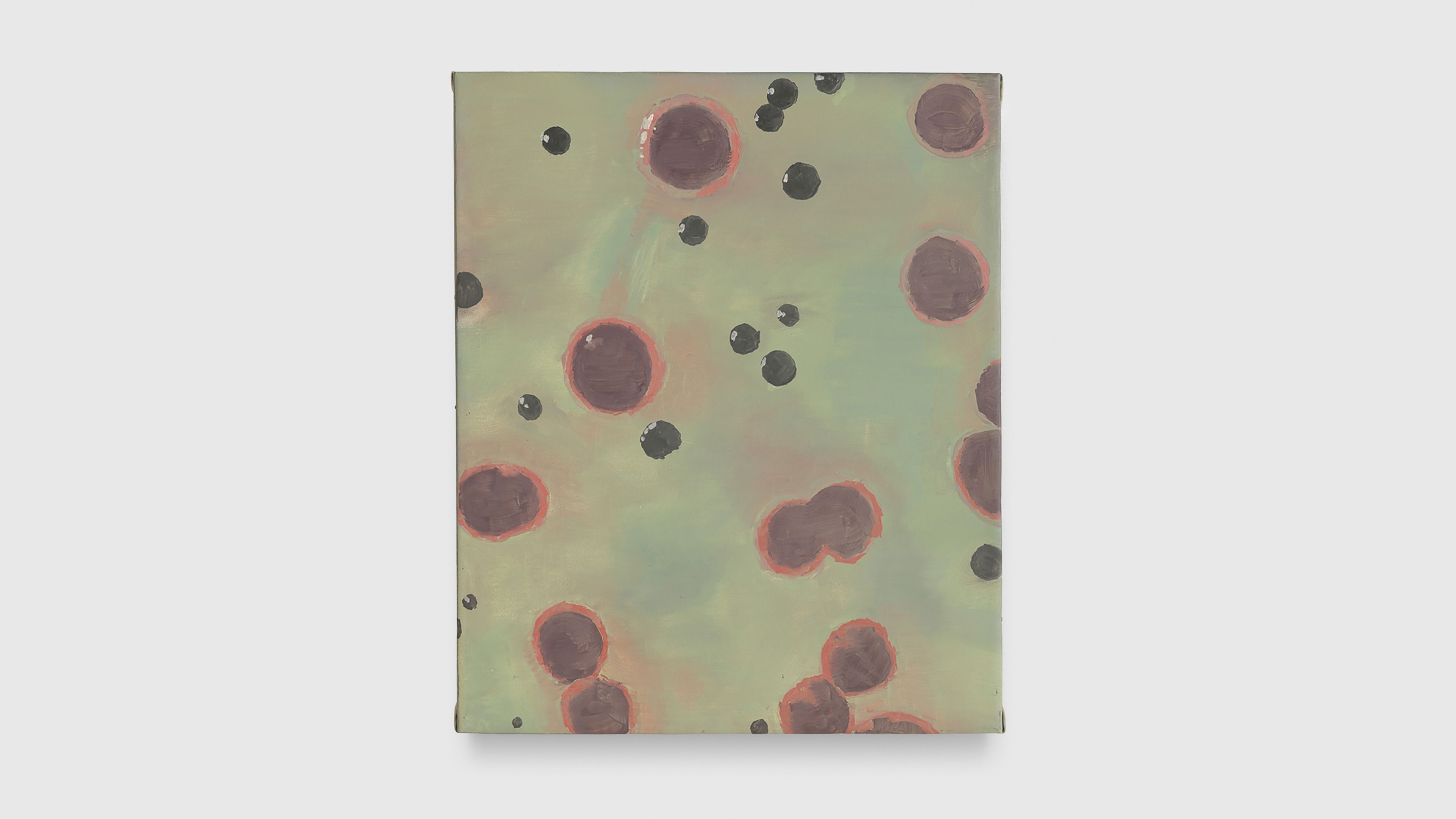LUC TUYMANS’S BLOODSTAINS, 1993, is one of the Belgian artist’s more allover compositions. Purplish-red discs rimmed with vermilion float within a rectangular format, accompanied by a smattering of smaller black dots. Erratically spaced, these circular forms drift indifferently toward all four edges and are in places cropped by them. Look a bit longer, and the picture splits, roughly, along an imaginary line running diagonally from the lower left corner to the upper right. To one side of that demarcation, the spots swell with life—white highlights imply glossy membranes, and a few well-placed smears suggest viscous leaks from the two largest shapes. To the other side of the line, the same elements appear dull and flat, drained of physicality. Based on an image of a microscope slide of a blood sample, Bloodstains is often likened to Tuymans’s major painting group of the preceding year, “Der diagnostische Blick” (The Diagnostic View, 1992). Composed of ten medium-size canvases whose images he sourced from a medical manual, that series proceeds from close-up views of faces to afflicted fragments of the body: a cancerous breast, eczema-ravaged legs. The final work in the cycle, Der diagnostische Blick X, portrays a patch of flesh with a malignant tumor: a brushy burgundy ovoid with an irregular aureole. Bloodstains alludes to this work in particular, reworking the malevolent form among its variously scattered and agglutinated cells. In so doing, Bloodstains picks up where “Der diagnostiche Blick” leaves off, scaling up a substance from beneath the skin. Produced at the height of another public health emergency, the painting inevitably evokes the HIV/AIDS epidemic. Considered anew in 2020, however, it also conjures the predominantly digital imagery of the current crisis. One thinks of the now-ubiquitous “spiky blob” graphic designed by the CDC medical illustrators Alissa Eckert and Dan Higgins to represent the novel coronavirus, but the comparison is inexact. That model appears in extreme detail against a blackened field, a biological meteor in a cosmic void. Closer matches for Bloodstains can be found among another class of visuals: the Covid-19 case-incidence maps updated continuously on the websites of the New York Times and other major news outlets. Whereas the CDC graphic materializes a threat undetectable to the naked eye, the latter images track its inexorable spread through the collective. As of this writing, from my self-isolation in Baltimore, much of the United States’ mid-Atlantic region appears as one enormous aggregate of red dots. Readers are invited to zoom in and out.

Luc Tuymans, Bloodstains, 1993